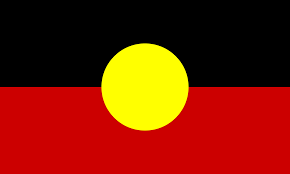Creating an equitable and inclusive hiring process

Inclusion isn’t just a value, it’s a responsibility. For organisations striving to build diverse, high-performing teams, creating an equitable and inclusive hiring process for LGBTQI+ individuals is not a nice-to-have; it’s a business, ethical, and social imperative.
Despite ongoing progress and growing visibility, LGBTQI+ people continue to face discrimination and exclusion in the workplace, especially during the hiring process. From unconscious bias in interviews to the lack of visibly inclusive policies, these barriers can prevent talented candidates from even getting their foot in the door.
Every person deserves the right to work in a safe, respectful, and fair environment, free from discrimination based on sexual orientation, gender identity, or expression. Indeed, studies show that diverse and inclusive teams are more innovative, more engaged, and outperform other ess diverse groups. Companies with strong LGBTQI+ inclusion policies attract a broader talent pool and can improve employee retention.
Organisations that champion LGBTQI+ inclusion build trust with employees, clients, and the wider community. A visibly inclusive hiring process signals that your business values equity and welcomes diverse perspectives, yet often, LGBTQI+ candidates may encounter challenges such as:
- Non-inclusive language in job ads or interviews
- Assumptions about identity or pronouns
- Lack of visible LGBTQI+ representation in company literature and promotional materials
- Inadequate policies on gender transition or inclusion
- Discomfort with disclosing identity, especially for trans and non-binary applicants

To counter these, organisations should build processes that not only eliminate bias but actively create space for LGBTQI+ inclusion. This doesn’t always happen by accident, but should be part of the design of the hiring process and fundamental to an organisation’s employer brand:
1.Start with Inclusive Job Descriptions
Use gender-neutral language, for example they/them, or the successful candidate and not he/she. Highlight the organisation’s commitment to inclusion, not just diversity and even goes as far as to clearly state that LGBTQI+ applicants are encouraged to apply. For example, the following statement could easily be added to the end of every job advertisement ‘We value diversity and are committed to creating an inclusive workplace for people of all sexual orientations, gender identities, and expressions.’
2.Train hiring teams in LGBTQI+ inclusion
Provide unconscious bias and allyship training and include specific modules on LGBTQI+ identities, language, and respectful communication. Educate recruiters and hiring managers about the impact of assumptions and try to use structured interviews with consistent questions for all candidates, avoiding overly personal questions and specifically those related to gender identity, family status, or sexual orientation.
3.Showcase inclusion through your employer brand
Include LGBTQI+ employees in recruitment material and storytelling and celebrate LGBTQI+ awareness days, or indeed Pride month. Share your progress and policies openly, as inclusion should be visible, not hidden in the fine print
4.Develop and enforce anti-discrimination policies
Have clear, enforced policies protecting LGBTQI+ employees and include LGBTQI+ inclusion in your broader diversity, equity, and inclusion (DEI) framework. Importantly, it’s useful to build and create pathways for employees to report concerns safely and confidentially so that they feel supported in their use of your policies.
And finally, don’t forget that true inclusion doesn’t end with hiring, it’s about long-term support and belonging. Continue to track LGBTQI+ representation and experience in recruitment and promotion and survey candidates about their experience of your hiring process in the same way that you might conduct internal engagement surveys.
Building an LGBTQI+ inclusive hiring process isn’t about ticking boxes, it’s about creating a culture where every candidate feels seen, respected, and valued from the very first interaction.
Whilst it starts with intention, it requires action and as workplaces continue to evolve, those that lead with empathy, inclusivity, and equity won’t just build better teams, they’ll build better and more successful outcomes.


